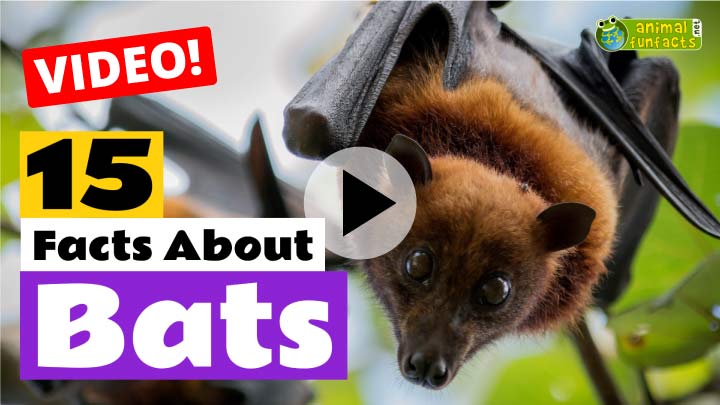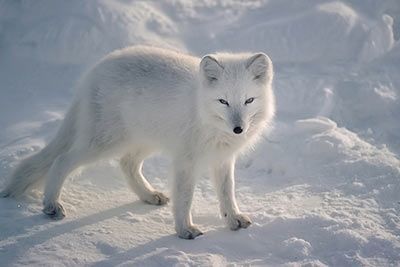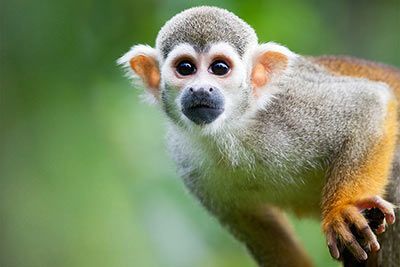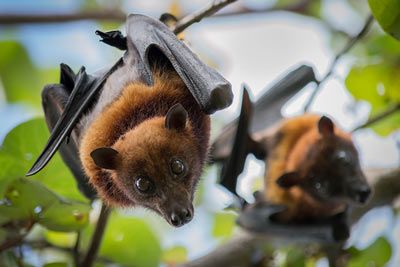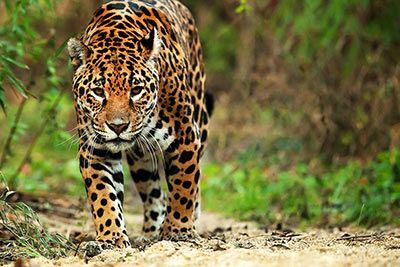Fruit Bat
Fruit Bat / Megabat Facts
| Size | 2.4-8.6 inch (60 mm to 22 cm) |
| Speed | Up to 25 mph (40 km/h) |
| Weight | 0.4-56 oz (12 g to 1.6 kg) |
| Lifespan | 10-30 years |
| Food | Fruit, nectar, pollen |
| Predators | Cats, snakes, rats |
| Habitat | Africa, Asia, Australia |
| Order | Chiroptera |
| Family | Megabats |
| Scientific name | Megachiroptera |
| Characteristics | Big eyes, uses eyesight for orientation |
Main Characteristics
Fruit bats, and the bat order in general, are the only mammals that can fly. Just like smaller bats, fruit bats are active at night and form large colonies. They live in tropical regions of Africa, Asia and Australia. The only European fruit bat is the Egyptian fruit bat, which lives on Cyprus. There are around 200 fruit bat species.
One main difference between fruit bats and the smaller microbats is that fruit bats don’t eat insects. They also use their very good sense of sight for orientation instead of echolocation.
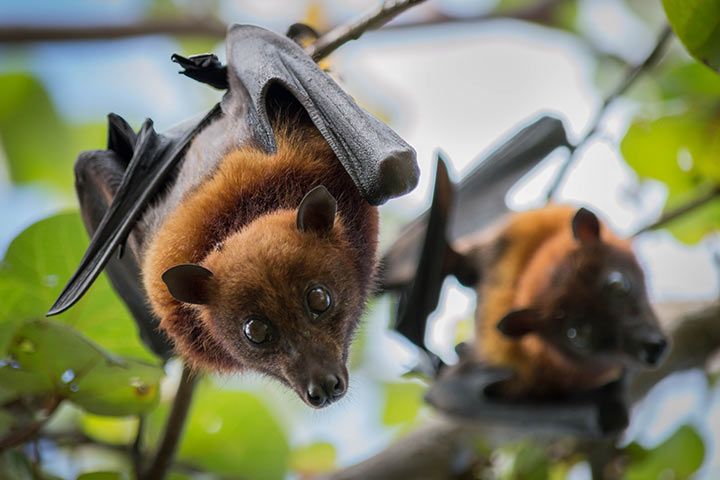
The Differences between Fruit Bats and Microbat
| Fruit Bat | Microbat |
|---|---|
| • Big eyes | • Small eyes |
| • Good eyesight | • Bad eyesight (echolocation!) |
| • Eats fruits, nectar, pollen | • Eats insects |
| • Quite big | • Quite small |
Behavior
Are Fruit Bats Dangerous?
Fruit bats don’t suck blood - if you were worried about that! They’re also not aggressive and don’t look for people to bite. Fruit bats are shy and peaceful. If a fruit bat does feel threatened - if you touch it or (accidentally) get too close - it may bite to defend itself, which can pass on dangerous viruses.
How Do Bats Take Off and Land?
When flying foxes aren’t flying, they hang upside down on branches or rocks. Just like smaller bats. How do these animals take off and land? They start flying by falling from their hanging position and then quickly start to beat their wings. To land, they fly so slowly that they almost stop in mid-air, then grab onto something. Some of them do a little somersault.
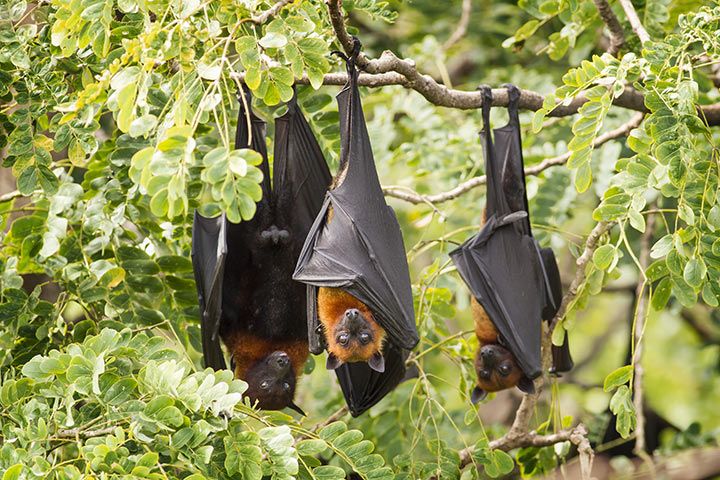
Anatomy and Appearance
The Biggest Fruit Bat
The greater flying fox, the giant golden-crowned flying fox and the Indian flying fox are the largest fruit bats. The greater and the Indian flying foxes can have wingspans of up to 60 inch (150 cm). The giant golden-crowned flying fox’s wings can even grow up to 170cm wide. The heaviest is the Indian flying fox, weighing 56 oz (1.6 kg).
The Smallest Fruit Bat
The smallest fruit bat is the long-tongued nectar bat. They are just 60mm - 85mm long (body) and weigh 0.4-0.6 oz (12-18 g). So they’re about as big as a business card and as heavy as a piece of candy.
Importance for the Ecosystem
Fruit bats are very important to ensuring species diversity in nature. Because they eat nectar and pollen, they pollinate flowers - just like bees. There are plants that can only be pollinated by fruit bats. They wouldn’t exist without them. Fruit bats also eat fruit, so spread seeds with their feces. This helps new plants grow.
Enemies and Threats
Endangered Animal Species
Fruit bats in general are not considered endangered. But there are some species that are endangered, e.g. the Bulmer’s fruit bat. This is the rarest fruit bat in the world, and at risk of extinction. These animals live in one cave in Papua New Guinea and there are only 137 to 160 animals left (stats from 2016).
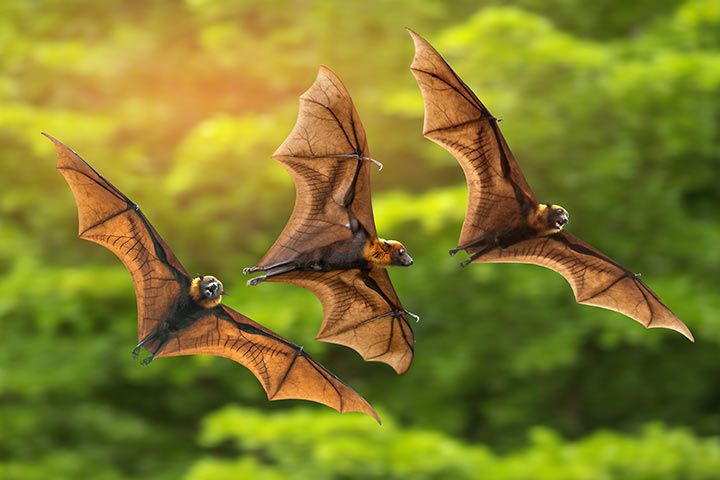
Records
The Biggest Fruit Bat Colony
There is an island in the Philippines called Samal Island. It is home to the Monfort Cave. This plays host to 1.8 million fruit bats. It was even entered into the Guinness Book of World Records (2010). Over 640 animals are packed into one square meter.
Fun Facts
Can Fruit Bats Swim?
Or would they drown? It looks funny but yes: bats and fruit bats can swim very well! They lie flat on the water and use their front arms to move, like breast stroke.
Are There Other Mammals That Can Fly?
The only other mammals that can stay airborne for a long time are flying squirrels. But they don’t really fly, they just glide towards the ground.
The Fruit Bat Is Related To:
- False Vampire Bat
- Horseshoe Bat
- Microbat
Animals in the Same Biome:
- Asian Elephant
- Brown Tree Snake
- Crocodile
- Hornbill
- Mangrove Monitor
- Leopard
- Orangutan
- Scorpion
- Tapir
- Tiger
Video: 15 Facts About Bats
(Video opens on YouTube)
- Find Out more:
- Animals With an Amazing Sense of Hearing
- Amazing Facts About Animal Tongues
- The Smallest Animals
- The Animals With the Widest Wingspan
- Top 10 Animals Most People are Scared of













